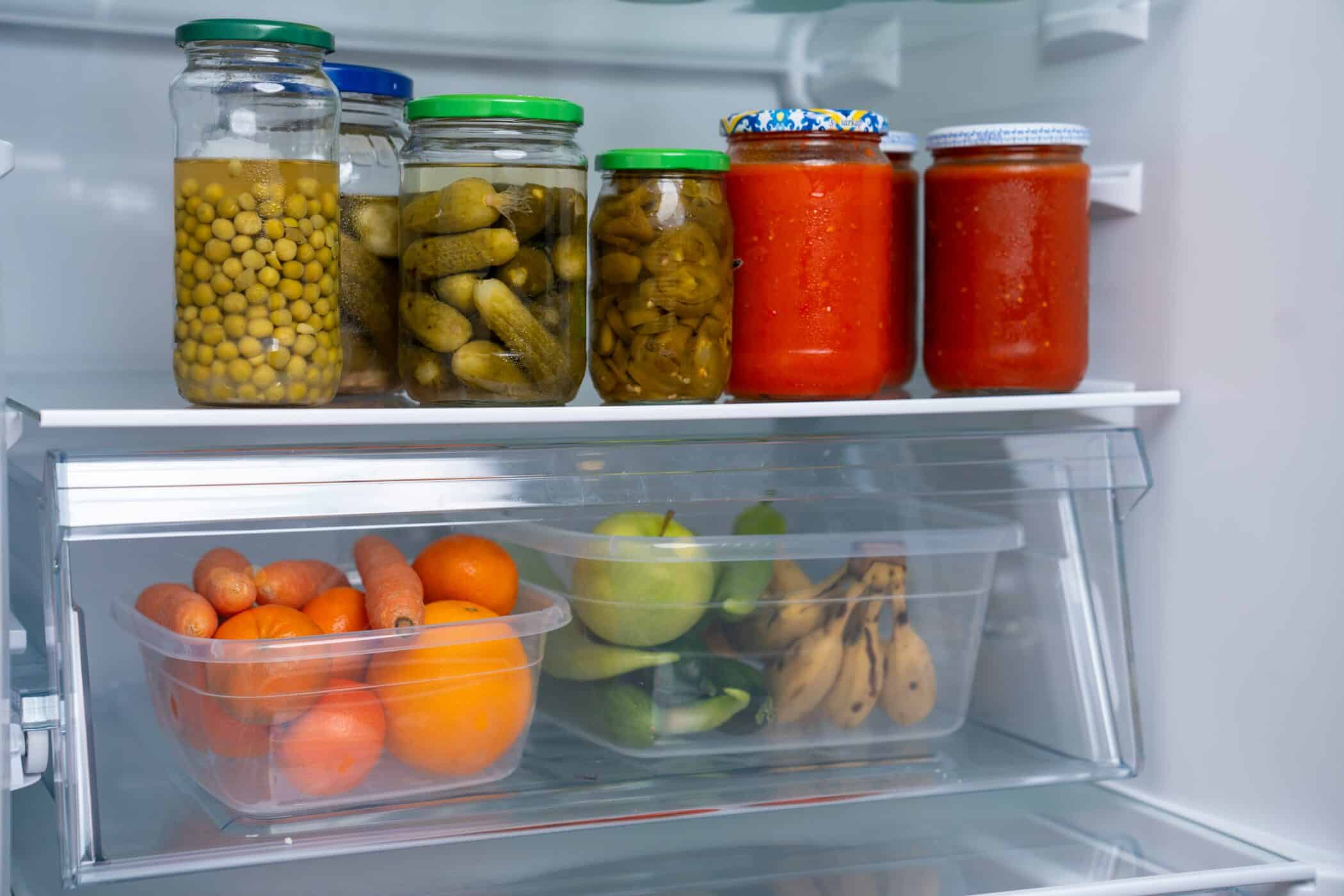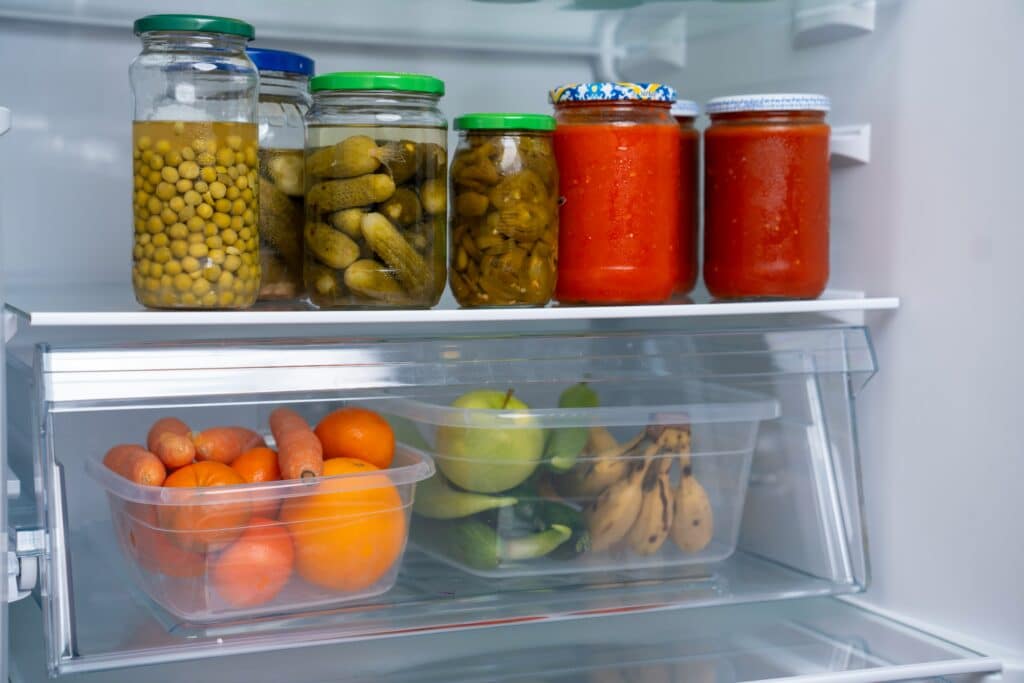
Are you worried about harmful chemicals in your meal prep containers? Choosing BPA-free options can help you maintain a healthier lifestyle. This guide will cover the risks of BPA, benefits of BPA-free containers, and how to select the right ones for your needs. You’ll learn about different types of BPA-free containers, top features to look for, and tips for maximizing their use. By the end, you’ll be equipped to make informed choices for safer food storage and meal prep
Table of Contents
Key Takeaways
- BPA-free containers are essential for safe meal prep and food storage
- Glass and stainless steel containers offer durability and safety for fitness enthusiasts
- Proper cleaning and organization extend the lifespan of meal prep containers
- Choosing BPA-free options supports sustainable manufacturing and reduces plastic waste
- Not all BPA alternatives are safe; research is crucial when selecting containers
Understanding the Risks of BPA in Meal Prep Containers
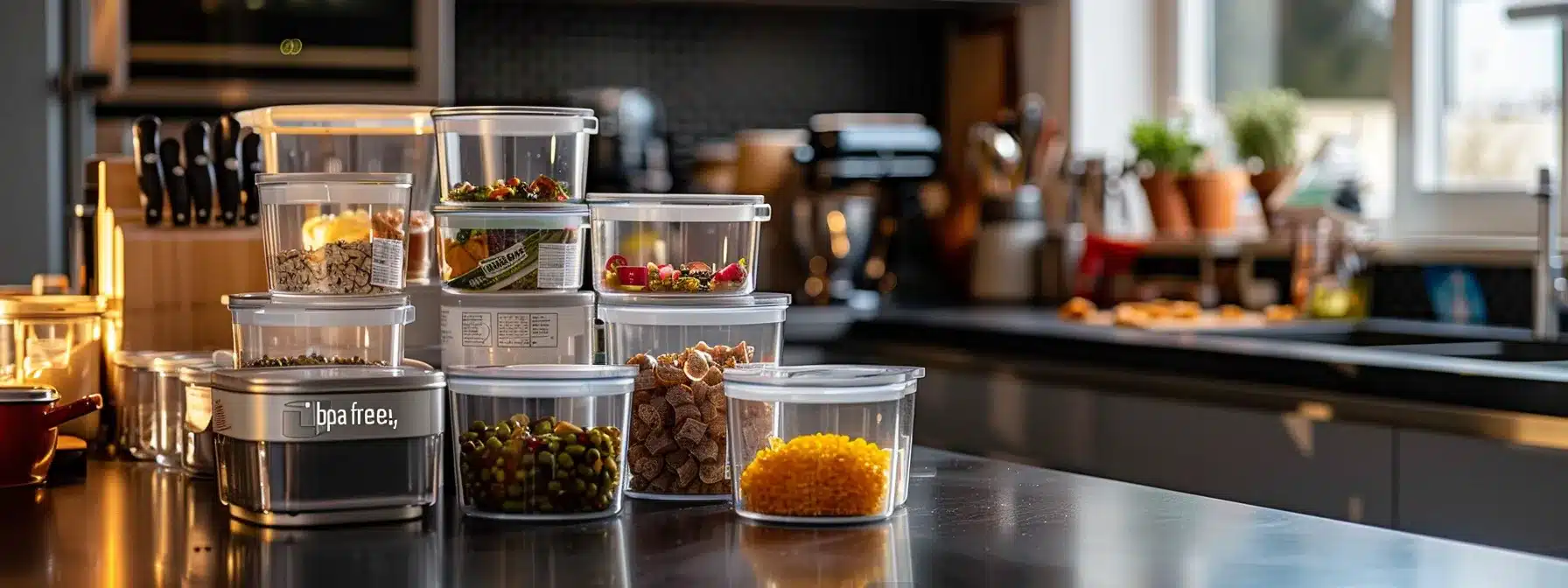
BPA, or bisphenol A, is a chemical found in some plastic food containers and can leach into food. This section explores BPA’s presence in meal prep containers, its potential health risks, and the importance of choosing BPA-free options. Understanding these factors helps consumers make informed decisions about their food storage, whether using plastic, glass, or dishwasher-safe containers.
What Is BPA and Where Is It Found?
BPA, or bisphenol A, is a chemical commonly found in certain plastic products, including some meal prep containers. It’s often used in the production of polycarbonate plastics and epoxy resins, which are used in various kitchen items like microwave-safe containers and salad bowls. While BPA can be found in many everyday items, its presence in food storage containers has raised concerns due to its potential to leach into food, especially when exposed to heat or acidic substances.
Health Implications of BPA Exposure
BPA exposure has been linked to several health concerns, including hormonal disruption and potential effects on reproductive health. Studies suggest that BPA may interfere with the body’s endocrine system, potentially impacting development and metabolism. When choosing meal prep containers, it’s important to consider BPA-free options, such as those made from stainless steel or BPA-free plastics. These alternatives can be used for cooking in the oven or storing food in bento-style containers with secure lids, reducing the risk of chemical leaching during food preparation and storage:
- Choose BPA-free plastics or stainless steel containers
- Look for containers suitable for oven cooking
- Opt for bento-style containers with secure lids
- Consider glass containers for microwave use
- Avoid heating food in plastic containers when possible
The Importance of Choosing BPA-Free Options
Choosing BPA-free meal prep containers is crucial for maintaining a healthy lifestyle. These containers, often made from silicone or other safe materials, are ideal for storing a variety of foods, from soup and broth to sauce. BPA-free options come in various sizes, including convenient jar-like containers, perfect for portioning meals and keeping ingredients fresh. By opting for BPA-free containers, individuals can safely reheat their meals without worrying about harmful chemicals leaching into their food.
Benefits of Using BPA-Free Meal Prep Containers

BPA-free meal prep containers offer numerous benefits for health-conscious individuals. These containers, made from materials like steel, promote a healthier lifestyle by eliminating harmful chemicals. They enhance food flavor and quality, making them ideal for storing snacks and meals. BPA-free options also provide environmental advantages, offering safe storage solutions that can withstand heat without compromising food safety.
Promoting a Healthier Lifestyle
BPA-free meal prep containers promote a healthier lifestyle by eliminating harmful chemicals from food storage. These containers, available in various shapes like bowls and trays, are perfect for packing breakfast or lunch. Many retailers, including Walmart, offer a wide selection of BPA-free options with secure gaskets to prevent leaks. By choosing these containers, people can safely store and reheat their meals, supporting their health and wellness goals:
- Use BPA-free bowls for portion-controlled meals
- Pack breakfast in leak-proof containers with gaskets
- Choose microwave-safe trays for easy reheating
- Find affordable options at retailers like Walmart
- Opt for containers that maintain food freshness longer
Enhancing Food Flavor and Quality
BPA-free meal prep containers enhance food flavor and quality, especially for dishes like chicken and leftovers. These containers, often made of borosilicate glass, preserve the taste and texture of meals better than traditional plastics. When storing casseroles or stock, BPA-free containers prevent unwanted chemical interactions, ensuring the food retains its original flavor profile. This quality preservation makes BPA-free options ideal for meal preppers who value both taste and health.
Environmental Advantages of BPA-Free Materials
BPA-free meal prep containers offer significant environmental advantages, particularly in food preservation. These containers are ideal for storing various ingredients, from vegetables to butter, without harmful chemical leaching. By using BPA-free options, consumers can extend the shelf life of pantry items while reducing plastic waste. This approach to food storage not only promotes healthier eating habits but also contributes to a more sustainable lifestyle:
Types of BPA-Free Meal Prep Containers
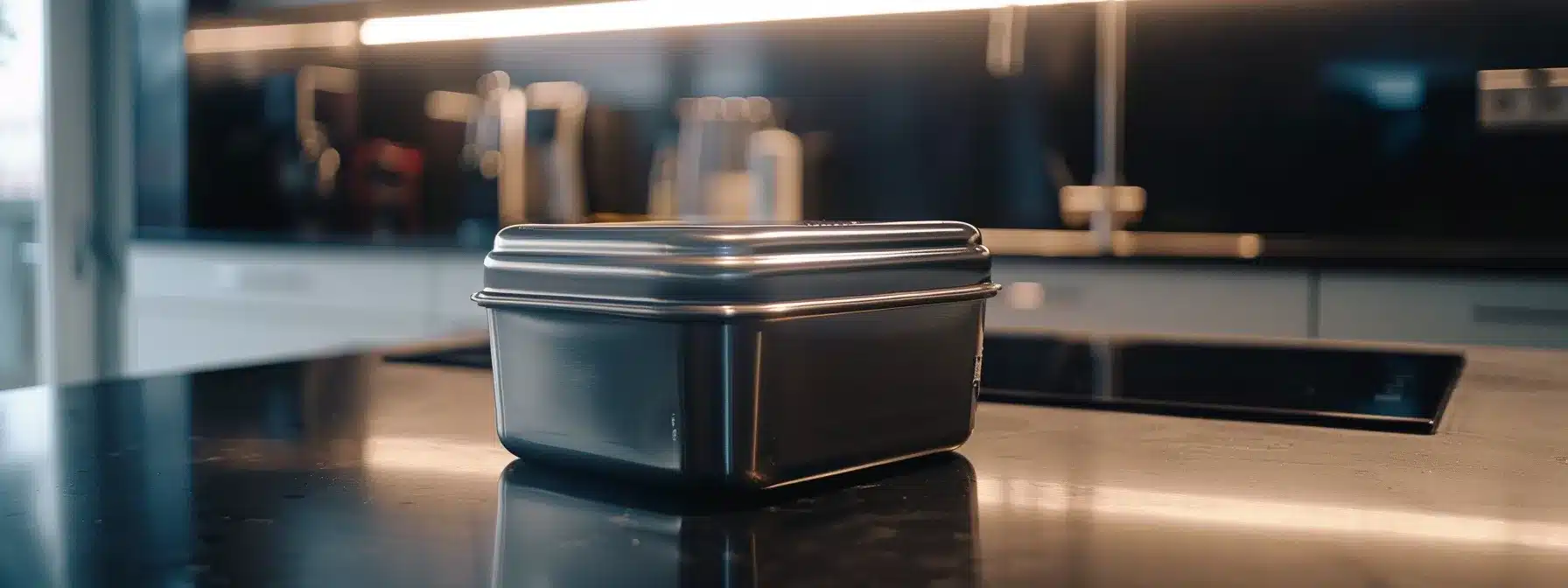
BPA-free meal prep containers come in various types, each with unique benefits. Glass containers offer transparency and safety, while stainless steel provides durability for long-term use. Safe plastics with BPA-free symbols are also available. Jet Fuel Meals uses high-quality, BPA-free containers to ensure food safety and freshness in their meal delivery service.
Glass Containers: Pros and Cons
Glass containers offer several advantages for meal prep, including durability, transparency, and resistance to staining and odors. They’re microwave and dishwasher safe, making them convenient for reheating and cleaning. However, glass containers are heavier than plastic alternatives and can break if dropped. Despite these drawbacks, many people prefer glass for its eco-friendly nature and ability to keep food fresh without chemical leaching:
Stainless Steel Options for Durability
Stainless steel meal prep containers offer unmatched durability for long-term use. These containers resist dents, scratches, and corrosion, making them ideal for daily use and transport. While not microwave-safe, stainless steel excels in preserving food temperature, keeping hot meals warm and cold dishes chilled. Many fitness enthusiasts prefer stainless steel for its lightweight yet sturdy nature, perfect for carrying meals to the gym or office.
Safe Plastics: Identifying BPA-Free Symbols
When choosing safe plastics for meal prep containers, consumers should look for the BPA-free symbol or labels indicating “BPA-free” on the packaging. These symbols typically feature a triangle with a number inside, ranging from 1 to 7, with numbers 1, 2, 4, and 5 generally considered safer options. Fitness enthusiasts often prefer containers marked with these symbols, as they provide assurance that the plastic won’t leach harmful chemicals into their carefully prepared meals.
How to Choose the Right BPA-Free Meal Prep Containers
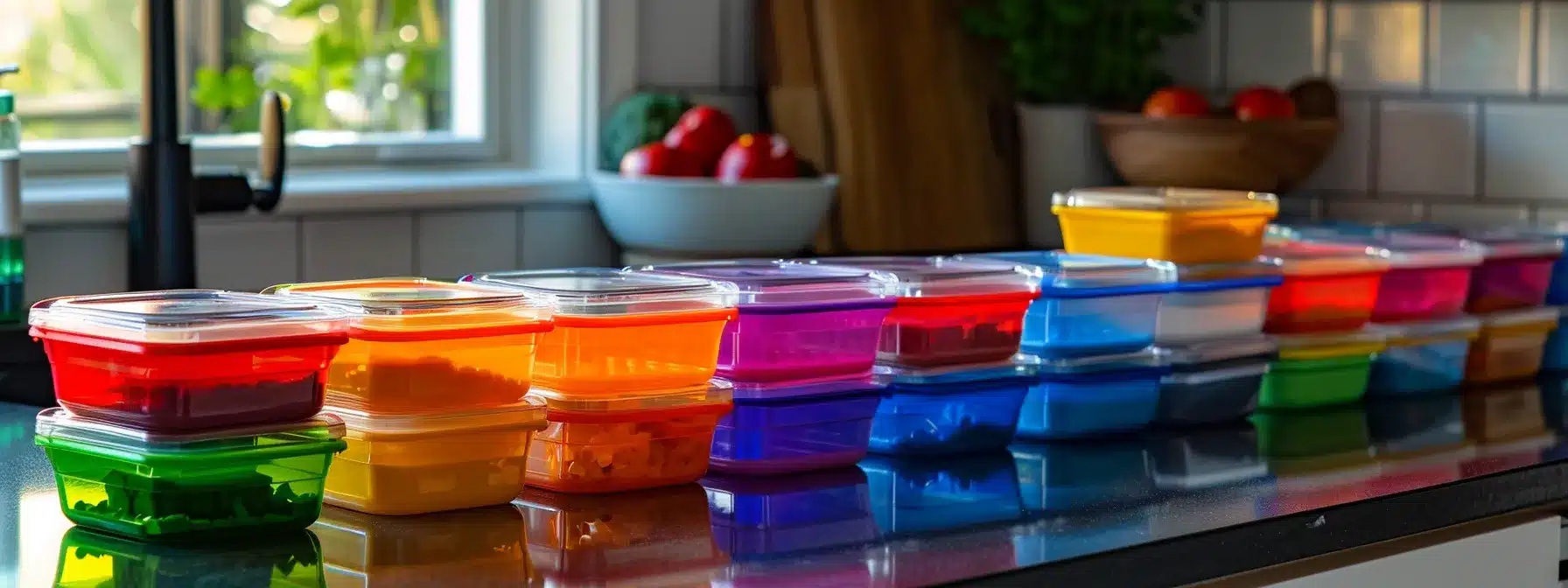
Selecting the right BPA-free meal prep containers involves assessing personal needs, considering size and portability, and evaluating lid types for freshness. These factors ensure that fitness enthusiasts can safely store and transport their meals. The following sections delve into each aspect, helping readers make informed choices for their meal prep routines.
Assessing Your Meal Prep Needs
Assessing meal prep needs involves considering dietary goals, workout routines, and lifestyle factors. Fitness enthusiasts should evaluate their weekly meal requirements, including portion sizes and food types, to select appropriate container sizes and quantities. They should also factor in storage space, transportation needs, and reheating preferences to choose containers that best suit their daily routines and fitness objectives.
Considering Size and Portability
When selecting BPA-free meal prep containers, fitness enthusiasts should prioritize size and portability. Containers come in various sizes, ranging from small snack-sized options to larger compartmentalized designs for full meals. Compact, stackable containers are ideal for those who need to carry multiple meals throughout the day. Lightweight materials like certain BPA-free plastics or thin glass can make transportation easier, especially for those who commute or bring meals to the gym.
Evaluating Lid Types and Seals for Freshness
When evaluating lid types and seals for BPA-free meal prep containers, fitness enthusiasts should prioritize airtight closures to maintain food freshness. Containers with silicone gaskets or snap-lock lids offer superior leak-proof protection, ideal for transporting soups or sauces. Some containers feature vented lids for microwave use, allowing steam to escape during reheating while preventing splatter.
Top Features to Look for in BPA-Free Containers
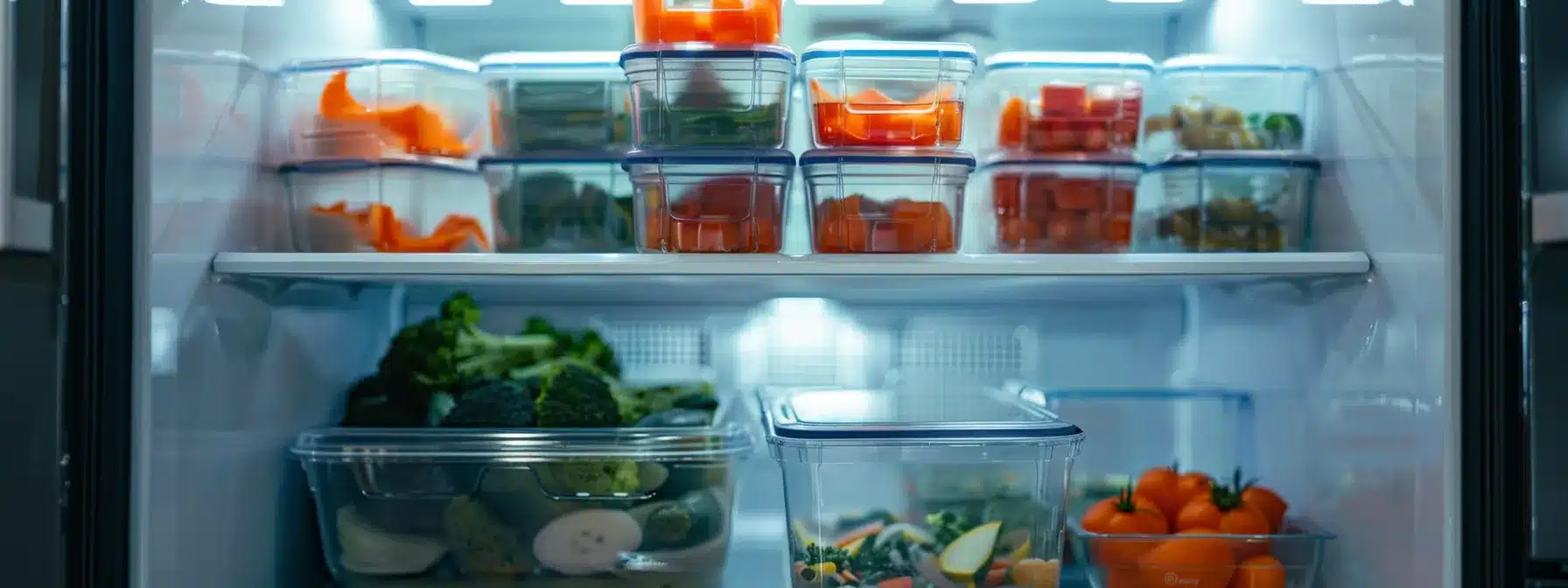
When selecting BPA-free meal prep containers, fitness enthusiasts should consider key features that enhance convenience and food safety. Microwave and dishwasher safety are crucial for easy reheating and cleaning. Leak-proof designs prevent spills during transport, while stackability saves space in the fridge. These features ensure efficient meal prep and storage for a healthier lifestyle.
Microwave and Dishwasher Safety
Microwave and dishwasher safety are essential features for BPA-free meal prep containers. Fitness enthusiasts often rely on these conveniences to reheat meals quickly and clean containers efficiently. Containers labeled as microwave-safe can withstand high temperatures without warping or leaching chemicals, while dishwasher-safe options resist damage from hot water and detergents. These features save time and effort in meal preparation, making it easier for health-conscious individuals to maintain their nutritional goals.
Leak-Proof and Airtight Designs
Leak-proof and airtight designs are crucial features for fitness enthusiasts who rely on meal prep containers. These designs prevent spills during transport and keep food fresh for longer periods. Many BPA-free containers now come with silicone seals or snap-lock lids that create a tight barrier against air and liquids. This feature is especially important for those who carry soups, sauces, or dressings alongside their main meals:
Stackability and Storage Efficiency
Stackability and storage efficiency are key features for fitness enthusiasts who meal prep in bulk. BPA-free containers that nest or stack easily save valuable fridge and cabinet space, allowing for better organization of meals. Many brands offer sets with varying sizes that fit together seamlessly, maximizing storage capacity. Some containers even feature interlocking lids that snap together, preventing them from getting lost in crowded drawers:
Comparing Popular BPA-Free Container Brands
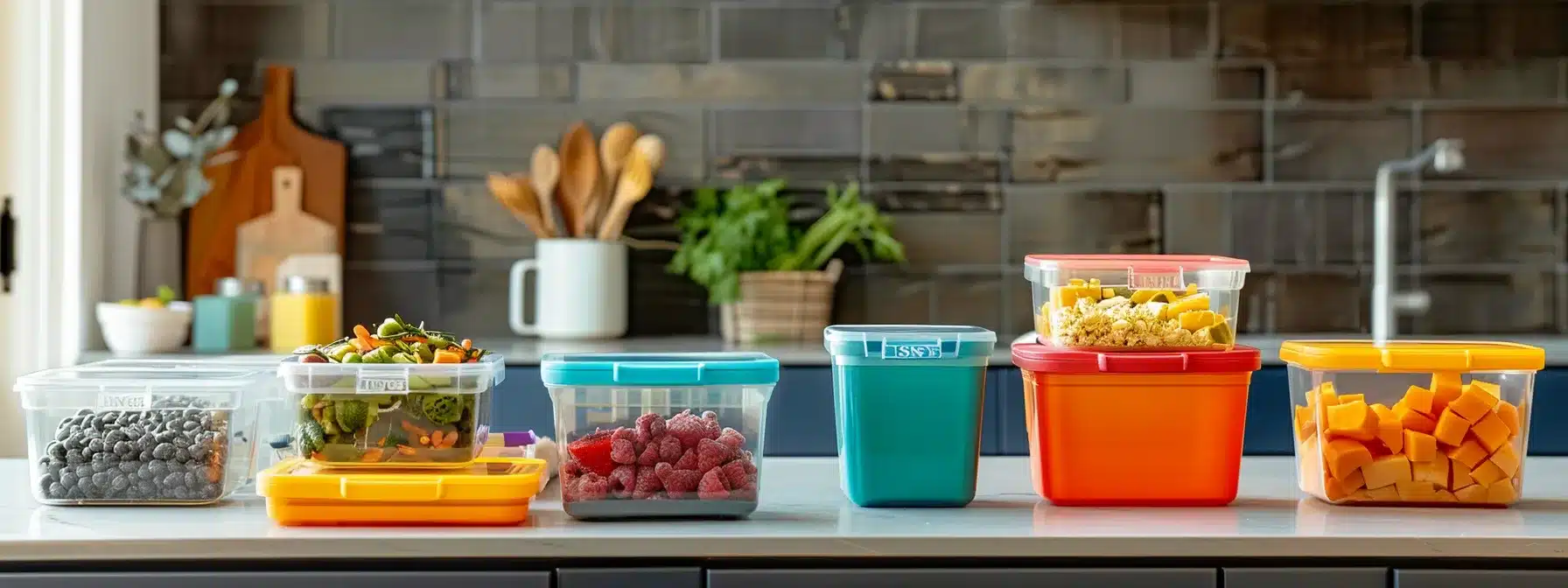
When selecting BPA-free meal prep containers, comparing popular brands is essential. This section examines brand reviews and user testimonials, price points and value for money, and warranty and customer support considerations. Understanding these factors helps fitness enthusiasts make informed decisions about their meal prep container purchases, ensuring they choose options that best suit their needs and budget.
Brand Reviews and User Testimonials
Brand reviews and user testimonials offer valuable insights for fitness enthusiasts selecting BPA-free meal prep containers. Many users praise containers from brands like Rubbermaid and Pyrex for their durability and leak-proof designs. Online reviews often highlight the importance of easy-to-clean materials and secure lids, with some users noting improved food freshness when using high-quality BPA-free options. These testimonials help potential buyers make informed decisions based on real-world experiences with different brands and models.
Price Points and Value for Money
BPA-free meal prep containers vary widely in price, with options available for every budget. Higher-end brands often offer better durability and features, justifying their cost for frequent users. However, many affordable options provide good value, especially when purchased in sets. Fitness enthusiasts should consider long-term use and the container’s ability to maintain food freshness when evaluating price points, as investing in quality containers can lead to less food waste and fewer replacements over time.
Warranty and Customer Support Considerations
When comparing popular BPA-free container brands, fitness enthusiasts should consider warranty and customer support offerings. Many reputable brands provide warranties ranging from one to five years, covering defects in materials and workmanship. Customer support quality varies among brands, with some offering responsive online chat services and others providing comprehensive FAQ sections on their websites. Fitness-focused consumers often value brands that offer easy replacement policies for damaged containers, ensuring their meal prep routines remain uninterrupted.
Tips for Maximizing the Use of Your BPA-Free Containers
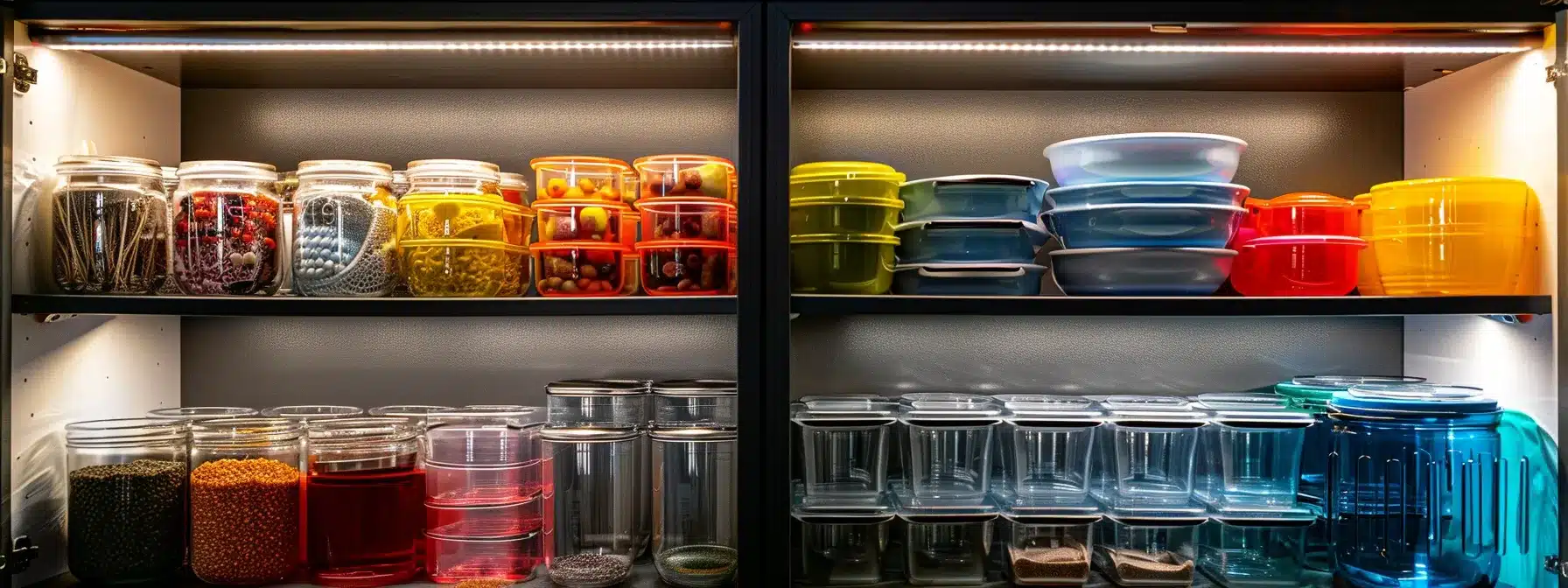
Maximizing the use of BPA-free containers involves proper cleaning, efficient meal prep organization, and extending container lifespan. By following simple practices, fitness enthusiasts can maintain their containers’ quality and functionality. This section covers essential tips for keeping containers clean, organizing meals effectively, and prolonging the life of these essential meal prep tools.
Proper Cleaning and Maintenance Practices
Proper cleaning and maintenance of BPA-free containers extends their lifespan and ensures food safety. Users should wash containers with warm, soapy water after each use, avoiding abrasive scrubbers that can scratch surfaces. For stubborn stains, soaking in a mixture of baking soda and water can be effective. Regular inspection for cracks or damage helps prevent bacterial growth and maintains the container’s integrity.
Organizing Your Meal Prep Efficiently
Efficient meal prep organization starts with labeling containers clearly with contents and dates. Fitness enthusiasts can streamline their routines by grouping similar meals together in the fridge or freezer, making it easy to grab and go. Using a color-coding system for different meal types or days of the week can further enhance organization, saving time and reducing stress during busy weeks.
Extending the Lifespan of Your Containers
Extending the lifespan of BPA-free containers involves proper storage and handling. Fitness enthusiasts should avoid extreme temperature changes, which can warp or damage containers. Storing containers with their lids off when not in use prevents moisture buildup and potential odors. Regular inspections for scratches or wear can help users identify when it’s time to replace a container, ensuring food safety and quality.
Common Misconceptions About BPA-Free Products
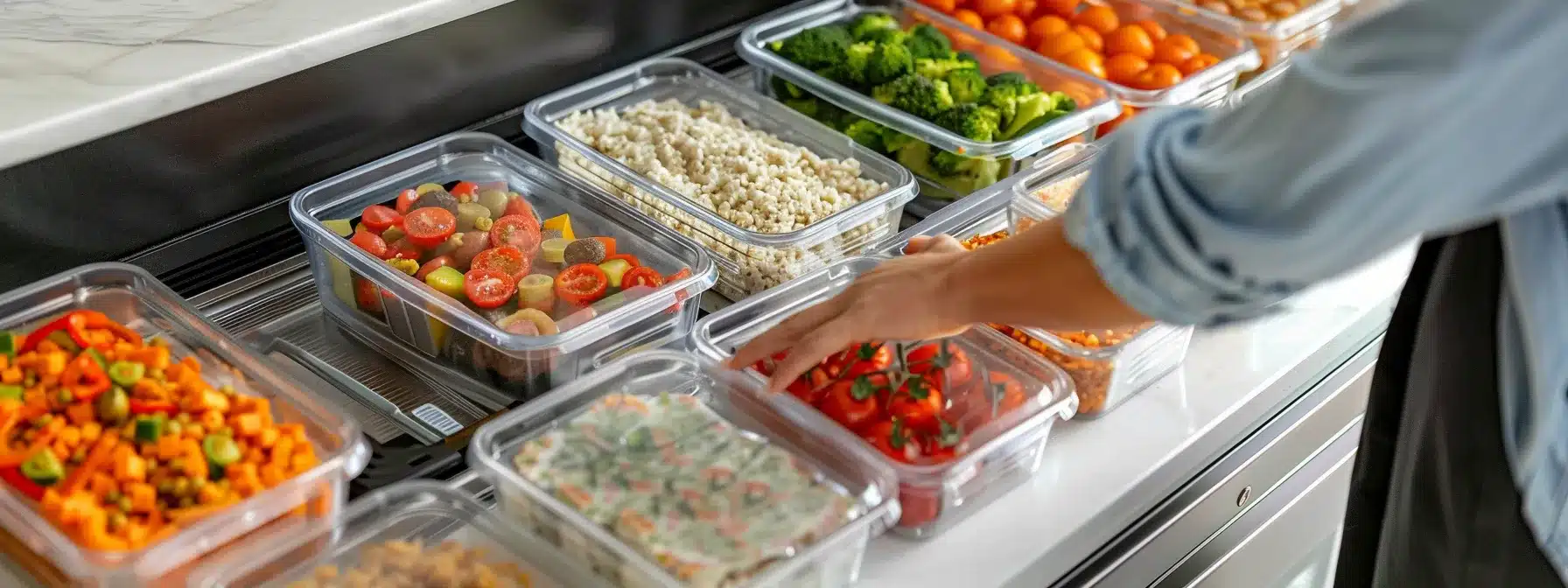
Common misconceptions about BPA-free products can lead to confusion when choosing meal prep containers. This section clarifies safety standards, debunks myths surrounding BPA alternatives, and offers guidance on staying informed about product safety. Understanding these aspects helps fitness enthusiasts make better decisions for their health and meal prep routines.
Clarifying Safety Standards
Safety standards for BPA-free products are often misunderstood. While the FDA regulates BPA in food containers, it doesn’t specifically oversee BPA-free claims. Many manufacturers voluntarily comply with standards set by organizations like the NSF International. Fitness enthusiasts should look for certifications from reputable third-party testing agencies to ensure their meal prep containers meet safety standards. It’s important to note that “BPA-free” doesn’t automatically mean a product is safe; other chemicals used as alternatives may have their own health concerns.
Debunking Myths Around BPA Alternatives
Many fitness enthusiasts assume that all BPA alternatives are safe, but this isn’t always true. Some BPA replacements, like BPS and BPF, may have similar effects on the body. It’s important to research the specific materials used in BPA-free containers and look for options that have been thoroughly tested for safety. Consumers should also be aware that “BPA-free” doesn’t necessarily mean “chemical-free,” and they should consider the overall composition of their meal prep containers.
How to Stay Informed on Product Safety
Fitness enthusiasts can stay informed about product safety by regularly checking reputable health and consumer protection websites for updates on BPA-free containers. They should also follow trusted nutrition experts and fitness influencers who often share the latest research on food storage safety. Signing up for newsletters from health organizations or consumer watchdog groups can provide timely information about new studies or recalls related to meal prep containers.
Environmental Impact of Switching to BPA-Free Containers
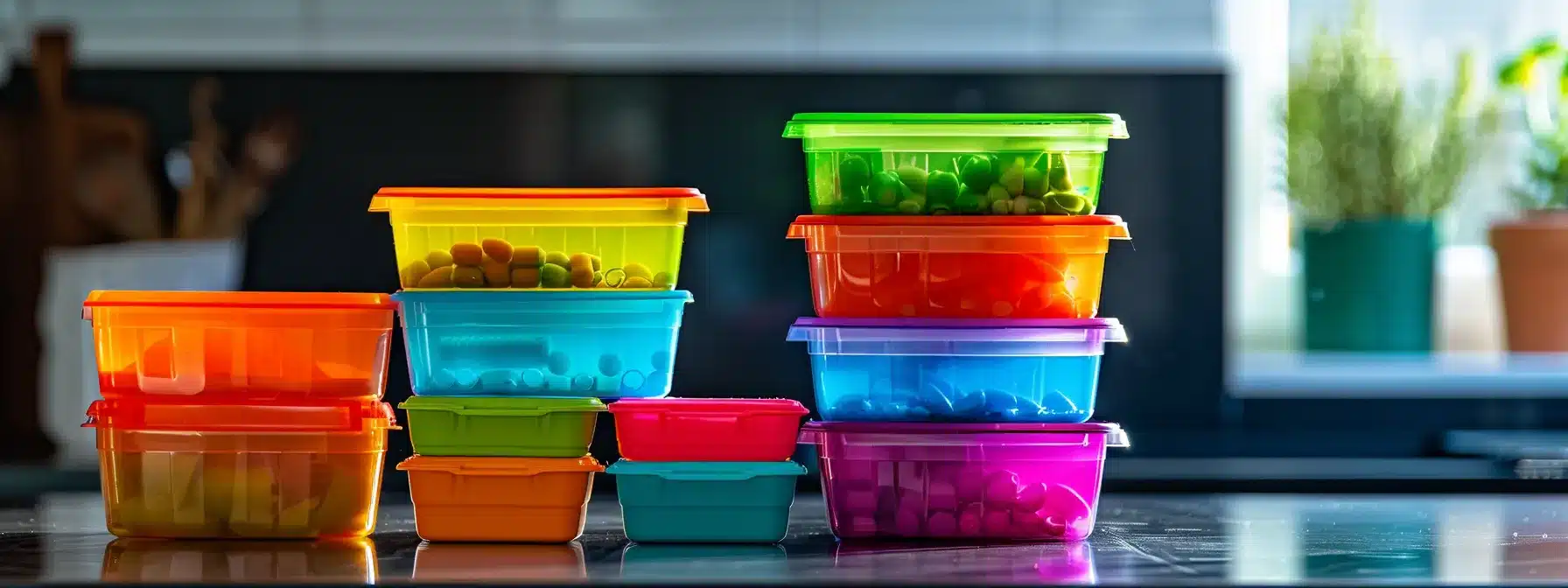
Switching to BPA-free meal prep containers offers environmental benefits beyond personal health. This section explores how these containers reduce plastic waste, support sustainable manufacturing, and encourage eco-friendly habits. By choosing BPA-free options, fitness enthusiasts can contribute to a healthier planet while pursuing their wellness goals.
Reducing Plastic Waste
Switching to BPA-free meal prep containers can significantly reduce plastic waste. These durable containers often last longer than their BPA-containing counterparts, reducing the need for frequent replacements. Many BPA-free options are also recyclable or made from recycled materials, further minimizing environmental impact. By choosing reusable BPA-free containers, fitness enthusiasts can cut down on single-use plastics, aligning their meal prep habits with eco-friendly practices.
Supporting Sustainable Manufacturing
Supporting sustainable manufacturing is a key benefit of choosing BPA-free meal prep containers. Many companies producing these containers use eco-friendly materials and processes, reducing their carbon footprint. Some manufacturers have adopted renewable energy sources in their production facilities, while others focus on minimizing water usage and waste. By selecting BPA-free options from these environmentally conscious brands, fitness enthusiasts can support businesses that prioritize sustainability, contributing to a greener future while maintaining their healthy lifestyles.
Encouraging Eco-Friendly Habits
Switching to BPA-free meal prep containers can encourage broader eco-friendly habits among fitness enthusiasts. By using these containers, individuals often become more aware of their overall environmental impact, leading to other sustainable choices in their daily lives. This shift can inspire them to seek out more eco-friendly products, reduce single-use plastics, and even adopt practices like composting or supporting local, sustainable food sources. As they incorporate these habits into their fitness routines, they contribute to a larger movement towards environmental consciousness in the health and wellness community.
Frequently Asked Questions About BPA-Free Meal Prep Containers
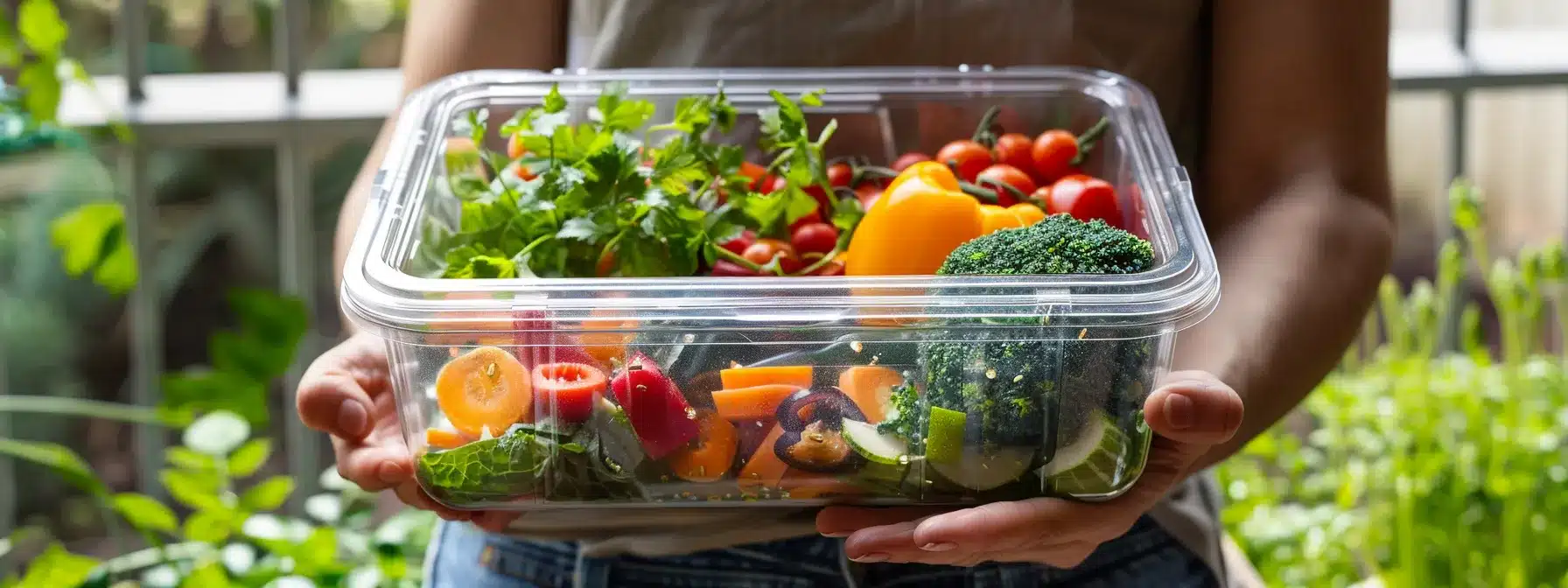
Fitness enthusiasts often have questions about BPA-free meal prep containers. This section addresses common concerns, including how to identify truly BPA-free products, the safety of BPA-free plastics, and best practices for using these containers. Understanding these aspects helps individuals make informed choices for their meal prep routines and overall health.
How Can I Tell if a Container Is Truly BPA-Free?
To identify truly BPA-free containers, fitness enthusiasts should look for clear labeling on the product or packaging. Reputable manufacturers often display “BPA-free” prominently on their containers. Additionally, checking the recycling code on the bottom of plastic containers can provide insight: numbers 1, 2, 4, and 5 are typically BPA-free, while 3 and 7 may contain BPA. For added assurance, consumers can contact manufacturers directly or consult third-party certifications from organizations that test for BPA and other harmful chemicals:
Are BPA-Free Plastics Completely Safe?
While BPA-free plastics are generally considered safer than those containing BPA, they are not entirely without risk. Some BPA alternatives, such as BPS and BPF, may have similar effects on the body. Fitness enthusiasts should be aware that “BPA-free” doesn’t necessarily mean “chemical-free.” To minimize potential risks, it’s advisable to choose containers made from materials like glass or stainless steel when possible, and to avoid exposing plastic containers to high heat or harsh chemicals.
What Are the Best Practices for Using BPA-Free Containers?
Best practices for using BPA-free containers include avoiding extreme temperatures, hand-washing when possible, and storing them properly. Fitness enthusiasts should refrain from microwaving food in plastic containers, even if labeled microwave-safe, to prevent potential chemical leaching. It’s advisable to transfer hot foods to containers only after they’ve cooled and to avoid leaving acidic foods in plastic containers for extended periods. Following these guidelines helps maintain the integrity of BPA-free containers and ensures food safety:
- Avoid exposing containers to extreme heat or cold
- Hand-wash containers when possible to extend their lifespan
- Allow hot foods to cool before storing in plastic containers
- Transfer acidic foods to glass containers for long-term storage
- Regularly inspect containers for wear and replace as needed
Frequently Asked Questions
What are the health risks associated with BPA in meal prep containers?
Jet Fuel Meals uses BPA-free, microwave-safe containers for all their meal prep deliveries, eliminating health risks associated with BPA exposure. This ensures customers can enjoy their fresh, chef-prepared meals without concerns about harmful chemicals leaching into their food during storage or reheating.
How can I identify BPA-free meal prep containers when shopping?
Look for containers labeled “BPA-free” or made from glass, stainless steel, or safer plastics like polypropylene (PP) and polyethylene (PE). Avoid containers with recycling codes 3 or 7, which may contain BPA or similar chemicals.
Are glass containers better than plastic for BPA-free meal prepping?
Glass containers are generally considered better for BPA-free meal prepping. They’re non-reactive, don’t absorb odors or stains, and are microwave-safe. While heavier, glass containers are more durable and eco-friendly than plastic alternatives, making them a popular choice for health-conscious meal preppers.
Can BPA-free containers be safely used in microwaves and dishwashers?
BPA-free containers are generally safe for microwave and dishwasher use. However, it’s important to check the manufacturer’s instructions for specific guidelines. Some BPA-free plastics may still release harmful chemicals when exposed to high heat, so using glass or ceramic containers for microwaving is often recommended.
Do BPA-free meal prep containers cost more than regular ones?
BPA-free meal prep containers typically cost more than regular ones due to the use of alternative materials and manufacturing processes. However, the price difference has decreased over time as demand for BPA-free options has increased, making them more accessible to health-conscious consumers.
Conclusion
Choosing BPA-free meal prep containers is crucial for fitness enthusiasts seeking to maintain a healthy lifestyle. These containers not only protect against potential health risks associated with BPA exposure but also offer benefits such as enhanced food flavor, durability, and environmental sustainability. By selecting the right BPA-free options, individuals can streamline their meal prep routines, ensure food safety, and contribute to reducing plastic waste. Ultimately, investing in high-quality, BPA-free meal prep containers aligns with the goals of health-conscious consumers, supporting their fitness journey while promoting overall well-being and environmental responsibility.

